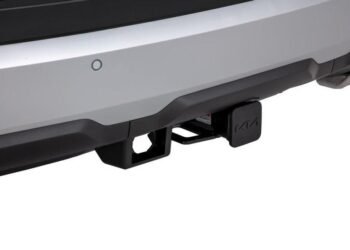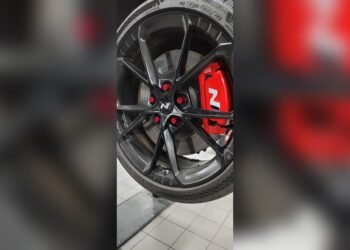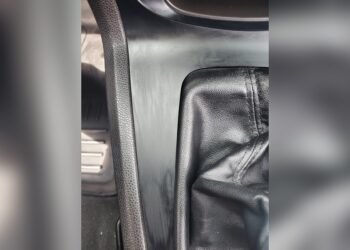Thinking about giving your car’s interior a fresh look by replacing or repairing the headliner? You might wonder if using regular fabric is a smart choice.
After all, it’s tempting to grab any fabric you like and save some money. But before you start cutting and gluing, you need to know how the fabric you choose affects the durability, appearance, and ease of installation of your headliner.
In this post, you’ll discover why regular fabric may not be the best fit for your car’s ceiling, what fabrics work best, and how to make your headliner project both successful and long-lasting. Keep reading to avoid costly mistakes and get a headliner that looks great and stands the test of time!
Choosing Headliner Fabric
Choosing the right fabric for your car’s headliner affects both look and function. The fabric must fit well and hold up over time. It should resist sagging and handle temperature changes. Different materials offer unique benefits. Understanding options helps you pick the best one for your vehicle.
Automotive Headliner Fabric Benefits
Automotive headliner fabric is made for vehicle ceilings. It stretches easily to fit curves and shapes. This fabric often has foam backing for extra support. It stays strong in heat and humidity. The surface is soft and smooth, improving cabin comfort. It also reduces noise inside the car.
Fleece As An Alternative
Fleece is a soft, warm fabric option for headliners. It is lightweight and easy to handle. Fleece can add extra sound insulation. It does not stretch much, so fitting can be tricky. This fabric works best on flat or simple surfaces. It offers a cozy feel but less durability than special headliner fabric.
Synthetic Leather And Vinyl Options
Synthetic leather and vinyl give a sleek, modern look. These materials resist stains and water well. They are easy to clean and maintain. Vinyl can be stiff and hard to stretch on curves. Synthetic leather feels softer but costs more. Both options may increase cabin temperature slightly.
Suede For Luxury Looks
Suede creates a rich, luxurious interior atmosphere. It has a soft, velvety texture that feels upscale. Suede requires careful cleaning and maintenance. This fabric can be sensitive to moisture and wear. It usually needs foam backing for support. Suede suits high-end vehicles or those seeking elegance.

Credit: www.amazon.com
Avoiding Common Fabric Mistakes
Avoiding common fabric mistakes is crucial for a smooth and lasting headliner installation. Choosing the right fabric affects the look and durability of your vehicle’s ceiling. Many beginners pick materials that cause problems later. Understanding fabric properties helps prevent costly errors. Below are some key points to consider to get the best results.
Why Stretch Matters
Stretch in fabric allows it to fit tightly over curves and edges. Without enough stretch, the fabric will wrinkle or bubble. Regular fabrics often lack this stretch. This makes installation difficult and results in a poor finish. Stretchy fabrics hold glue better and stay smooth longer.
Problems With Heavy Fabrics
Heavy fabrics weigh down the headliner board. This causes sagging over time. Glue may fail because it cannot hold the weight. Thick materials also hide details and reduce the ceiling’s shape. Light to medium-weight fabrics work best for durability and appearance.
Issues With Thin Materials
Thin fabrics tear easily during installation. They may also show imperfections underneath. Thin materials do not block noise or light well. This reduces comfort inside the vehicle. Choosing a medium-weight fabric balances strength and flexibility.
Preparing For Installation
Preparing for installation is the first step to a smooth headliner replacement. It involves removing the old fabric, cleaning the surface, and gathering the right tools. A clean and prepped surface ensures the new fabric sticks well. Taking time in this stage saves effort later.
Removing Old Headliner
Start by carefully peeling off the old fabric. Use a scraper to remove glue and foam residue. Remove any loose bits to avoid lumps under the new fabric. Take your time to avoid damaging the headliner board. A clean board will help the fabric lay flat and last longer.
Cleaning The Surface
Wipe the board with a cloth dipped in a mild cleaner. Remove all dust, dirt, and old glue. Allow the surface to dry completely before applying new adhesive. A clean surface improves glue strength and fabric adhesion. Avoid harsh chemicals that can damage the board.
Tools And Adhesives Needed
Gather a spray adhesive designed for automotive use. It must be strong and heat resistant. Use a sharp utility knife to trim excess fabric. A roller helps smooth out air bubbles and wrinkles. Have clamps or weights ready to hold fabric while drying. Proper tools make installation easier and neater.

Credit: www.amazon.com
Step-by-step Installation Tips
Installing a regular fabric headliner can refresh your car’s interior affordably. Follow simple steps to get a smooth, neat finish. Careful preparation and patience help avoid common issues like wrinkles and bumps. This guide breaks down the process into easy-to-follow parts.
Cutting And Measuring Fabric
Start by measuring the headliner board carefully. Add extra fabric to all sides for wrapping. Use sharp scissors or a rotary cutter for clean edges. Cut the fabric slowly to match the shape accurately. This prevents waste and ensures full coverage.
Applying Adhesive Properly
Choose an adhesive that suits your fabric type. Spray glue works well for even coverage. Apply glue in thin, consistent layers on the board. Wait a few minutes for the adhesive to become tacky. Press fabric gently but firmly onto the surface.
Smoothing And Stretching Fabric
Stretch the fabric evenly while placing it on the board. Use your hands or a soft tool to smooth out air pockets. Work from the center outward to avoid wrinkles. Keep the fabric taut but avoid overstretching, which may tear it.
Dealing With Wrinkles And Bumps
Small wrinkles can be smoothed by pressing and stretching the fabric. Use a warm iron on low heat with a cloth between to remove stubborn creases. For bumps, lift the fabric slightly and reapply adhesive underneath. Pat the fabric down firmly to fix the surface.
Maintaining Your Headliner
Maintaining your headliner is essential for keeping your car’s interior fresh and comfortable. Regular fabric headliners can last long if cared for properly. Small efforts in cleaning and prevention help avoid costly repairs. Understanding how to maintain the fabric will keep it looking neat and intact.
Cleaning Tips For Fabric Headliners
Use a soft brush or vacuum with a brush attachment. Gently remove dust and loose dirt from the surface. For stains, use a mild fabric cleaner and a clean cloth. Dab lightly; do not rub hard. Avoid soaking the fabric to prevent glue damage. Always test cleaners on a small hidden spot first.
Preventing Sagging And Damage
Keep the interior dry to avoid moisture buildup. Moisture weakens the glue holding the fabric. Park in shaded areas to protect from extreme heat. Heat can soften glue and cause sagging. Avoid hanging heavy items from the headliner. Handle the fabric gently during cleaning or repairs.
When To Replace The Headliner
Replace the headliner if fabric sags heavily or tears appear. Strong odors or mold also signal replacement time. If cleaning does not restore appearance, consider a new headliner. Regular fabric headliners may need replacement every 8-10 years. Timely replacement improves car comfort and resale value.
Cost-effective Fabric Sources
Finding cost-effective fabric sources for your headliner project helps save money without sacrificing quality. Choosing the right fabric keeps your vehicle’s interior fresh and neat. Regular fabric can work well if selected carefully. Budget-friendly options are available both online and in physical stores. This guide covers where to shop, good fabric brands, and whether to do it yourself or hire a pro.
Shopping Online And In-store
Online stores offer wide selections and competitive prices. You can compare fabric types and read reviews easily. Many sellers provide detailed photos and measurements. Shipping costs vary, so check before you buy. In-store shopping lets you feel fabric texture and test stretch. You can also ask staff for advice on headliner suitability. Local fabric shops sometimes have discounts and clearance sales.
Budget-friendly Fabric Brands
Some brands focus on affordable, durable fabrics suitable for headliners. Look for polyester blends and foam-backed fabrics. These materials resist sagging and wear. Popular budget brands include Moonlighting Auto Tops and Midwest Fabrics. They offer various colors and textures. Choosing known brands reduces the risk of poor fabric quality. Always check if the fabric stretches slightly for better fit.
Diy Vs Professional Installation
Installing headliner fabric yourself saves money on labor. Many online tutorials guide you step-by-step. DIY suits those with patience and basic tools. Mistakes may lead to wrinkles or loose spots. Professionals bring experience and proper tools. Their work usually lasts longer and looks cleaner. Weigh the cost of labor against your skill level. Simple fabrics are easier for DIY projects than complex ones.

Credit: www.youtube.com
Frequently Asked Questions
Can I Use Any Fabric For A Headliner?
No, not all fabrics suit a headliner. Choose stretchy, durable, and foam-backed materials for proper fit and longevity. Regular fabrics may sag or wrinkle. Use automotive headliner fabric, fleece, synthetic leather, or suede for best results. Avoid heavy or non-stretch fabrics to prevent damage.
Can You Use Any Fabric For Headliner Reddit?
No, you cannot use any fabric for a headliner. Choose stretchy, durable, foam-backed materials designed for automotive use to prevent sagging and wrinkles. Regular fabrics lack stretch and durability, causing poor fit and short lifespan in vehicle environments.
What Material To Use For Car Roof Lining?
Use automotive headliner fabric for car roof lining. It’s lightweight, durable, foam-backed, and stretches to fit contours perfectly. Avoid heavy or non-stretch fabrics to prevent sagging and wrinkles. Fleece, synthetic leather, vinyl, or suede are good alternatives depending on style and durability needs.
What Are Common Headliner Mistakes?
Common headliner mistakes include using non-stretchy fabrics, heavy materials, poor adhesive, and ignoring surface preparation. These cause sagging, wrinkles, and short lifespan.
Can I Use Regular Fabric For A Car Headliner?
Regular fabric can be used, but it may sag or not fit well without foam backing.
Conclusion
Choosing regular fabric for your headliner can be a smart, affordable choice. It offers flexibility and easy installation for many car owners. Regular fabric tends to be lightweight and can fit well with proper preparation. Remember to pick a fabric that stretches slightly and holds up over time.
This helps prevent sagging and keeps your car interior looking neat. With the right fabric, your headliner can stay fresh and comfortable for years. Simple materials often do the job well without extra cost or effort.

















